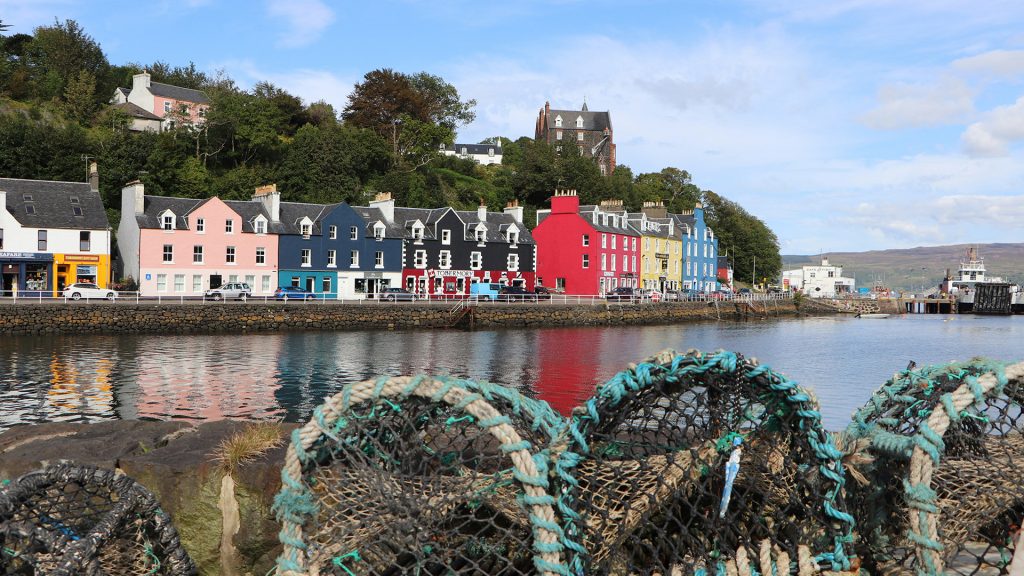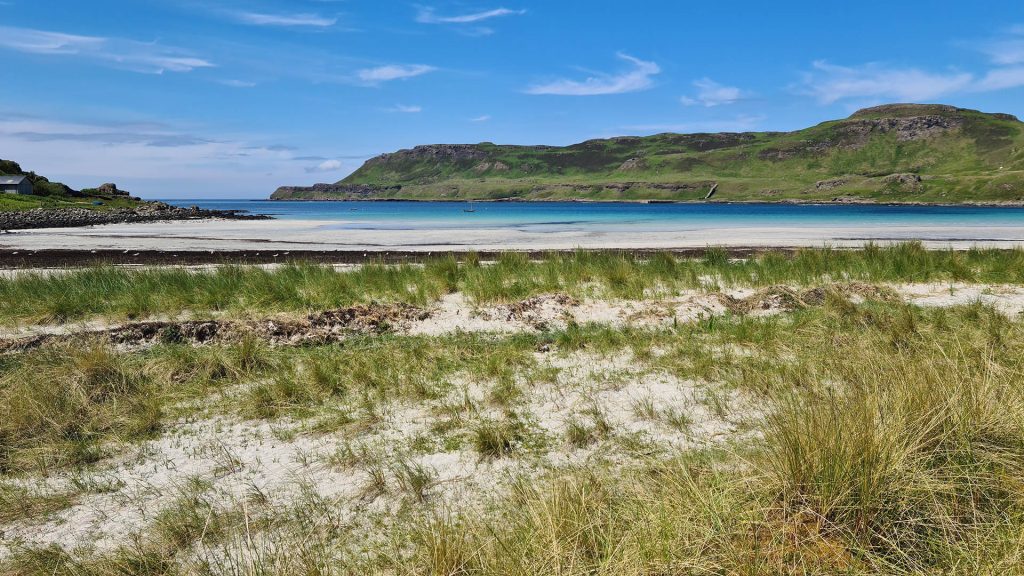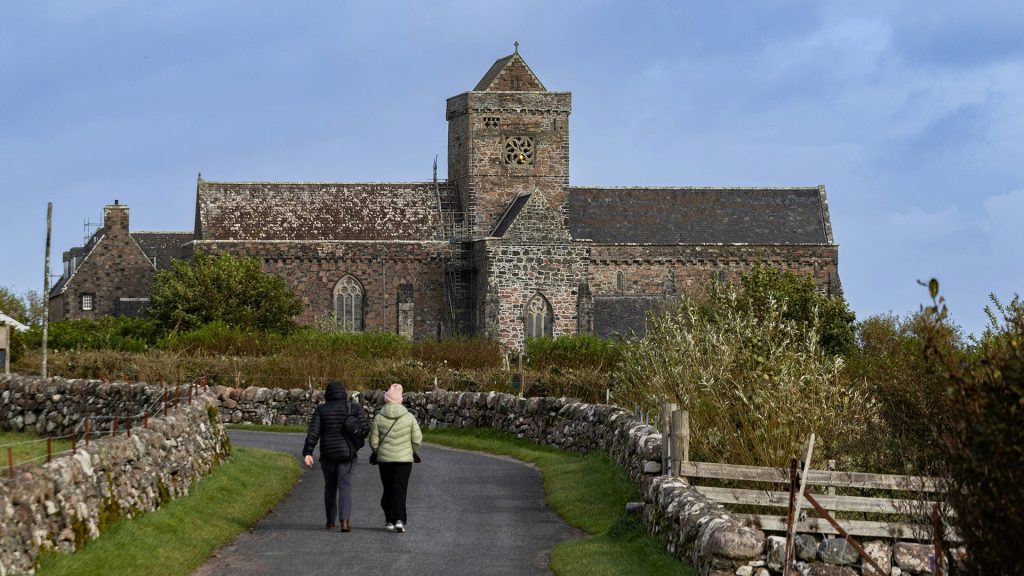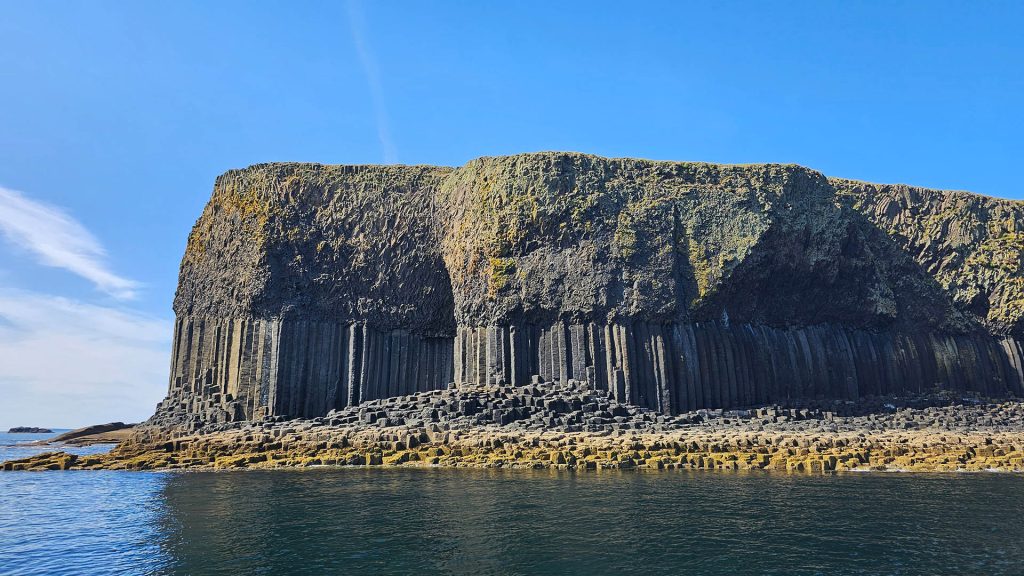The Isle of Mull and its neighbour Iona are two of the most captivating destinations in the Hebrides. With rugged mountains, pristine beaches, colourful villages, and centuries of history, they offer a taste of Scotland at its wildest and most beautiful. You don’t need weeks to enjoy them either. In just three days you can experience the highlights of both islands, from Tobermory’s charm to Iona’s tranquillity, while also leaving space for chance encounters with eagles, otters, and maybe even whales.
This itinerary is designed for travellers arriving by ferry from Oban to Craignure, but it works just as well if you’re exploring the islands as part of a longer Highland or Hebridean adventure.
Day One: Arrival and Tobermory
Most journeys to Mull begin in Oban, where the ferry crossing to Craignure takes just under an hour. The sailing itself is part of the experience, giving you sweeping views across the Sound of Mull and a first glimpse of the mountains and coastline that define the island. As you approach Mull, the striking silhouette of Duart Castle perched on its cliffside comes into view, a reminder of the island’s rich history. From Craignure, the road north threads along the shoreline towards Tobermory. Even if you’re travelling by bus rather than car, this is a scenic journey, winding past bays and forests before the brightly painted houses of the harbour town appear.

Tobermory is the island’s capital and one of the most photographed villages in Scotland. The colourful buildings that line the waterfront have become a symbol of Mull, and the harbour always seems alive with fishing boats, yachts, and the cries of seabirds. Spend your morning wandering the shops and galleries along the seafront, perhaps picking up handmade crafts or local artwork. The Mull Museum offers a compact but fascinating look at the island’s past, from clan history to shipwrecks.
In the afternoon, stretch your legs with a walk to Aros Park, just a short distance from the town. The park has woodland trails, waterfalls, and fine views back across Tobermory Bay. Another option is to visit Tobermory Distillery, one of the oldest commercial distilleries in Scotland, where you can take a tour and sample either their whisky or their popular gin.
Evening is best spent enjoying the hospitality of Tobermory’s restaurants and pubs. Seafood is a highlight here, with langoustines, scallops, and mussels often making their way straight from the local waters to your plate. After dinner, settle into one of Tobermory’s many guesthouses or small hotels. The town makes a perfect base for your first night, combining comfort with atmosphere.
Day Two: Wildlife and the Wild West
The second day is dedicated to exploring Mull’s landscapes and wildlife. Setting out from Tobermory, head towards Calgary Bay, one of the island’s most beautiful and accessible beaches. The sweep of white sand and turquoise sea looks almost tropical on a sunny day, while the machair behind the beach bursts into colour with wildflowers in summer. Nearby, the Calgary Art in Nature trail winds through woodland dotted with sculptures and installations by local artists, blending creativity with the natural environment.

From Calgary, continue west and south through the village of Dervaig, notable for its striking church with a tall, pointed spire. The road then loops around the shores of Loch na Keal, an area renowned for its wildlife. This is one of the best places in Scotland to look for golden eagles, which soar over the ridges, and white-tailed sea eagles, whose huge wingspans are unmistakable. Otters are also common along the shoreline, though they often require patience and a sharp eye to spot.
Many visitors choose to book a guided wildlife tour on this day, either by land in a small minibus with expert guides or by sea on a boat trip from Tobermory or Ulva Ferry. These tours dramatically increase your chances of seeing whales, dolphins, porpoises, and a variety of seabirds. For families or those with limited time, a shorter boat trip to the island of Ulva offers a rewarding experience with excellent walking, birdlife, and a charming community-owned café.
By late afternoon you can return to Tobermory for another night or, if you prefer, stay in a more central location such as Salen. Staying central makes the journey to Iona on the following day shorter and allows you to experience a different side of the island’s hospitality. Wherever you choose, the second evening is often best spent simply relaxing and reflecting on the vastness of the landscapes you’ve travelled through and the abundance of wildlife that makes Mull so special.
Day Three: Iona and the Journey Home
No visit to Mull feels complete without crossing to Iona. Early in the morning, set out from your accommodation and head south to Fionnphort. This small village at the tip of Mull is the departure point for the short ferry to Iona, a crossing that takes only a few minutes but feels like a step into another world.
Iona is best known as the birthplace of Christianity in Scotland, founded by St Columba in the sixth century. The abbey, rebuilt and restored over the centuries, remains a place of pilgrimage and peace. Walking through its cloisters and chapels, you can sense the depth of history and the spiritual significance that has drawn visitors for more than a thousand years. Nearby stands St Oran’s Chapel and the Reilig Odhrain, believed to be the burial place of early Scottish kings.

After exploring the abbey and chapel, take time to wander the island more freely. Iona is small but filled with hidden corners, from quiet lanes lined with cottages to beaches that rival any in the Hebrides. The north end of the island is particularly peaceful, with white sand and turquoise water stretching out towards Mull. Bring a picnic or enjoy lunch at one of the local cafés before spending your afternoon soaking in the atmosphere.
If your schedule allows, a boat trip to Staffa is an unforgettable addition. The basalt columns of Fingal’s Cave are world-famous, and in spring and early summer the island is alive with puffins nesting along the cliffs. These excursions typically leave from both Iona and Fionnphort, fitting neatly into a day visit.
As evening approaches, return to Fionnphort and begin the journey back across Mull towards Craignure for the ferry to Oban. The drive itself is a last chance to appreciate the grandeur of Mull’s scenery, from sweeping lochs to rugged peaks. By the time you step back onto the ferry, the sense of space and stillness that characterises the islands will stay with you.
Making the Most of Your Visit
Although this itinerary works perfectly for a three-day escape, Mull and Iona reward a longer stay. The islands change with the seasons: spring brings wildflowers and puffins, summer offers long days and lively festivals, autumn is rich with colour and quieter roads, while winter reveals dramatic skies and a sense of isolation. Each visit feels different, and many travellers find themselves drawn back again and again.

Practical details are worth planning in advance. Ferries can book up quickly, especially in summer, so reserving your place with CalMac is recommended. Accommodation ranges from simple hostels and B&Bs to luxury retreats, but options on Iona are limited, so consider whether you want to overnight there or base yourself on Mull instead. Driving gives you the greatest flexibility, but buses link the major routes and can make the trip relaxing for those who prefer to leave the car behind. Above all, come prepared for the changeable weather of the Hebrides — layers, waterproofs, and sturdy footwear will make your trip much more comfortable.
A Lasting Impression
Three days may not be enough to see every corner of Mull and Iona, but it is enough to capture their essence. From the painted houses of Tobermory to the silent cloisters of Iona Abbey, from the call of an eagle overhead to the whisper of waves on Calgary Bay, these islands leave a powerful impression. Whether you come for history, wildlife, scenery, or simple peace, Mull and Iona welcome you with experiences that linger long after you leave.
